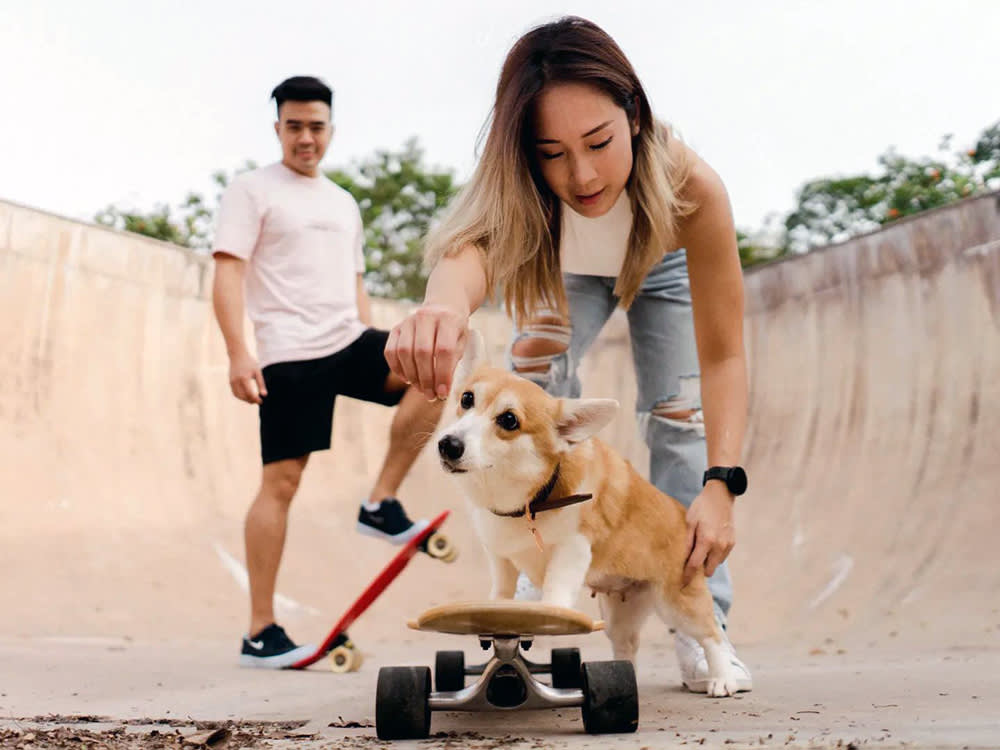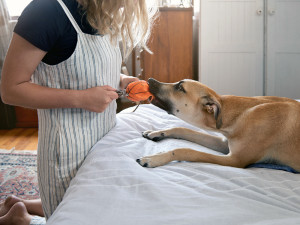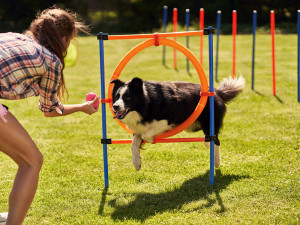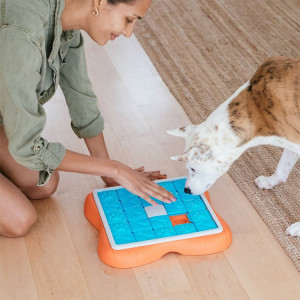How to Teach Your Dog to Skateboard
They’ll be doing ollies in no time
There are many tricks you can teach your dog: sit, shake, lie down. But if you really want your pup to shine (or become a TikTok sensation), you’ll teach them to skateboardopens in new tab. While that may seem cute, if absurd, it’s actually pretty doable. Certain canines, such as Bulldogsopens in new tab, are naturals when it comes to the sport due to their low centres of gravity. But even larger breedsopens in new tab (if they can fit on the boards) can be denizens of Dogtown.
All you have to do is familiarise your pet with the unique sensation of standing on the deck, then gently introduce them to movement. The chances are slim that they’ll be doing ollies from there, but they will love the mix of positive reinforcement and breeze in their faces. Meanwhile, you’ll enjoy the satisfaction of sticking it to all other parents at the dog park. Everyone wins!
Get (totally free) deals for food, treats, accessories, tech and way more pet parenting must-haves.
Five steps to teach your dog to ride a skateboard
1. Get them comfortable on the board
This step is critical and I recommend doing it slowly. Rushing it will slow down your eventual success. Start by rewarding your dog for putting one paw on the board while it is secured with a piece of wood or with your foot acting as a brake. If the board is adjustable, start with the board tightened so it can’t rock back and forth. Ideally, the board shouldn’t move while the dog gets accustomed to it. Later, as your dog gets more comfortable, reward your dog for putting two paws on the board and so forth.
2. Get your dog used to being on the board while moving
Once your dog is comfortable fully standing on the board with all four paws, the next step is to get them comfortable with the movement. Start by moving the board with your dog comfortably on it just a few inches and then a little bit more at a time. Only allow the board to move slowly. If possible, you should take advantage of opportunities to reinforce your dog for having all four paws on the skateboard and for letting it move with one paw hopping along behind.
3. Next, get your dog comfortable pushing the board
Reward your dog for pushing the board with one or both back paws. These pushes are critical for having a dog propel the skateboard for any distance rather than just passively riding a board you have set in motion.
4. Gradually increase the speed and the distance
As your dog picks up the skill and is more comfortable with pushing the board, you’ll work on speed and duration. At this point, you’ll wait longer before reinforcing them. Some dogs may not enjoy the increased speed or riding it for longer periods of time. Stay within your dog’s comfort zone.
5. Loosen the skateboard in stages
Slowly loosen the board so that it rocks back and forth (necessary for steering) and go through the entire process with the board at each one of these settings. You can then reinforce the dog for steering, which is accomplished by shifting their weight to one side or the other as they ride.
Consider your dog’s skill, physical limitations and interest level
The dogs in these videos are very experienced and highly skilled, but few dogs will attain that level of success at skateboarding. Always keep in mind what your dog can comfortably do so that you don’t put them in a situation that is over their head. Stick to smooth surfaces, keep them away from roads and other dangers, and don’t send them down a hill of any kind, no matter how mild, until they’re ready.
Just as in people, some dogs are athletic, fearless and adventurous enough that skateboarding comes fairly naturally to them. Other dogs may never reach true proficiency at it but might enjoy skateboarding very slowly for brief periods. There are also dogs who are clearly not suited to this activity, and if that’s the case for your dog, do not even consider attempting to teach them to ride.






